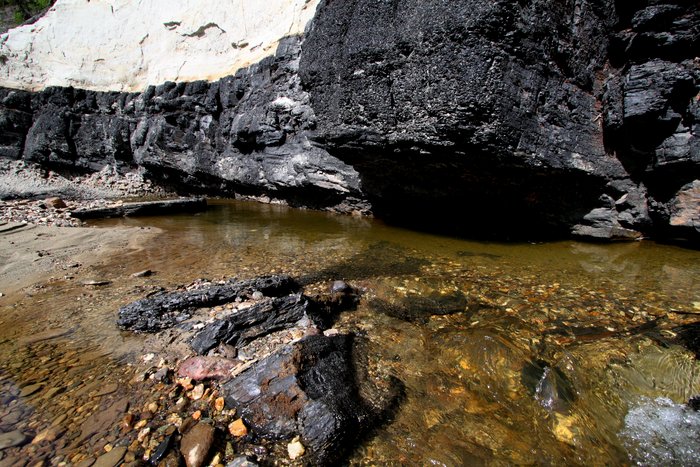
Coal was first discovered in Alaska by an English trader in 1786. The deposit was located at Coal Cove, near Port Graham Bay on the Kenai Peninsula. The Russian-American Company began mining at this site almost 70 years later in 1855, 13 years before the territory was purchased by the United States.
From an 1889 Issue of the NY Times:
“The past two years’ explorations in the supposed coal fields of Western Alaska have demonstrated that the Territory presents a new and inexhaustible source of wealth in its coal fields. There is every indication that the coal can be easily mined. This is the unvarying statement of every person who has had the means of personal observation… The supply seems illimitable, the consumption will rapidly increase, and the business of its transportation to California, Oregon, and Washington will become enormous…”
By the early 1900s, there were a number of small coal mines throughout the state that together produced about 3000 tons of coal per year. This coal came from mines on Admiralty Island in SE Alaska, Unga Island south of the Alaska Peninsula, Corwin Bluffs, the Cape Beaufort area on the Arctic coast, the Chignik River on the Alaska Peninsula, the Seward Peninsula, the Chickaloon area, and several mines in the Homer area.
However, these local mines provided a mere three percent of the coal consumed in the state.
Until WWI, the majority of Alaska coal was used by nearby steamships, railroads, and canneries. During WWI the US Navy began to use and subsidize more coal mined in Alaska, and by 1920 Alaska mines provided nearly 40% of the coal used in the state. Production continued to increase after WWI and the early 1920’s saw the opening of the Evan Jones Coal Mine and the large Suntrana mine in the Nenana coal field near Healy. In 1943, strip mining began to displace underground mining and in 1944 the first Usibelli Coal Mine Inc. strip mine was opened. By the end of WWII Alaska had begun to export some of its coal.

During the 1960’s the discovery of large gas and oil fields in Alaska precipitated the conversion of most coal infrastructure to other fossil fuels. During this period Usibelli Coal Mine purchased the Suntrana mine and the mining operations in the Matanuska coal fields ceased operation. Since 1971, Usibelli Coal Mine has been the only significant operating coal mine in Alaska. In 1984 a deep water port and coal loading facility was constructed in Seward for the export of Usibelli coal to South Korea and in anticipation of increased coal production in Alaska.
“Alaska’s 1985 coal production set a new all-time record at nearly 1.4 million short tons. The International Energy Agency in 1985 projected that Alaska’s total coal production in the year 2000 will be over 28 million short tons. Indeed, Alaska promises to be an important coal mining and export center of the 21st century.”
(Alaska Division of Geological and Geophysical Surveys, 1986, see Further Reading)
However Usibelli Coal Mine Inc. produced only about 1.8 million tons of coal in 2009, almost half of which is exported to Asia and South America.
There has been a lot of recent interest in larger-scale mining of Alaska’s coal. A number of proposals for coal mines and coal-fired power plants in the last few decades have failed for economic reasons, including the Kenai Blue Sky proposal, the Chickaloon proposal, the Matanuska proposal, and the Bethel Power Plant proposal. There is currently active interest in developing coal in Cook Inlet, both a traditional mine near the Chuitna River and an underground coal gasification project on the west side of the inlet.
Further Reading
Created: Jan. 19, 2018